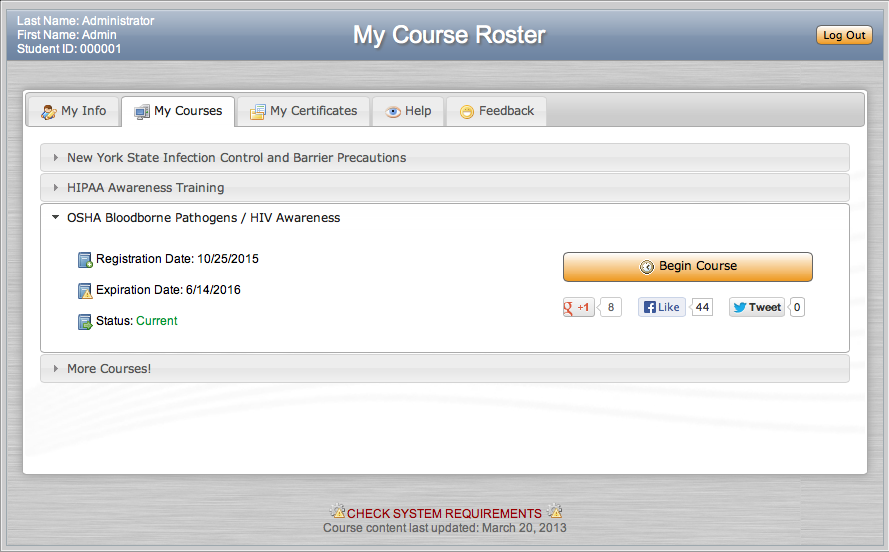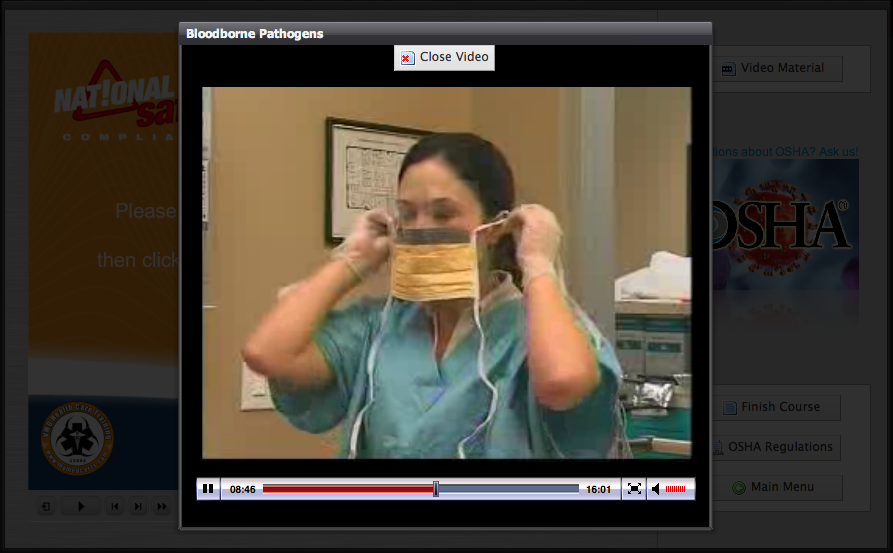Covered Professions
Who Should Take This Course
Designed for any employee who has a reasonable anticipation of contact with blood or other potentially infectious materials as a result of performing designated job duties, including but not limited to, healthcare workers, public safety personnel, housekeeping and custodial workers, educational and correctional workers, and designated first aid providers
Also ideal for medical, nursing, and other healthcare students requiring OSHA Bloodborne Pathogens and/or Universal Precautions certification for rotations
Needlestick injuries and other sharps-related injuries which expose workers to bloodborne pathogens continues to be an important public health concern. Workers in many different occupations are at risk of exposure to bloodborne pathogens, including Hepatitis B, Hepatitis C, and HIV/AIDS. First aid team members, housekeeping personnel in some settings, nurses and other healthcare providers are examples of workers who may be at risk of exposure.
OSHA estimates that 5.6 million workers in the health care industry and related occupations are at risk of occupational exposure to bloodborne pathogens, including human immunodeficiency virus (HIV), hepatitis B virus (HBV), hepatitis C virus (HCV), and others. All occupational exposure to blood or other potentially infectious materials (OPIM) place workers at risk for infection with bloodborne pathogens. OSHA defines blood to mean human blood, human blood components, and products made from human blood. Other potentially infectious materials (OPIM) means:
(1) The following human body fluids: semen, vaginal secretions, cerebrospinal fluid, synovial fluid, pleural fluid, pericardial fluid, peritoneal fluid, amniotic fluid, saliva in dental procedures, any body fluid that is visibly contaminated with blood, and all body fluids in situations where it is difficult or impossible to differentiate between body fluids
(2) Any unfixed tissue or organ (other than intact skin) from a human (living or dead)
(3) HIV-containing cell or tissue cultures, organ cultures, and HIV- or HBV-containing culture medium or other solutions; and blood, organs, or other tissues from experimental animals infected with HIV or HBV.
Continue Reading




















